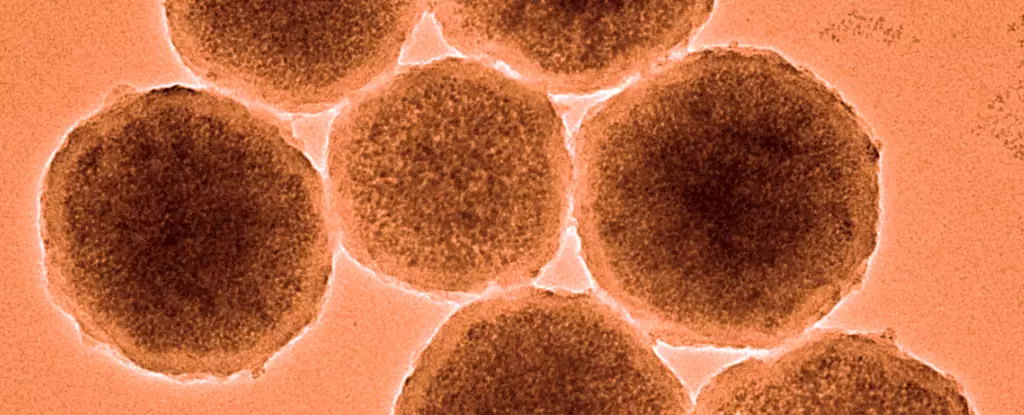The evolution of medical treatment continues to surprise us, and a notable recent advancement has come from researchers at Shanghai Jiao Tong University and the University of Edinburgh. They have pioneered the development of magnetically-controlled spherical nanobots that promise to revolutionize the way we understand and treat brain aneurysms. With the capability to deliver precise doses of clotting agents directly into the bloodstream, these nanobots could address a critical issue in medicine—preventing life-threatening bleeds in the brain while also minimizing surgical risks.
Each nanobot is astoundingly small, with an average diameter of just 300 nanometers—smaller than a human cell. These tiny artifacts consist of a magnetite core which serves as both an anchor and a means of navigation through the body’s complex vascular system. The core is enveloped in a protective shell containing thrombin, a crucial clotting agent that is released only when activated by a specific temperature. This innovative design allows the nanobots to maintain their integrity while traveling through blood vessels, thus providing a controlled delivery mechanism tailored for use in emergency situations, such as ruptured aneurysms.
The way in which these devices operate is nothing short of extraordinary. Under the influence of a magnetic field, a technician can steer the nanobots to the precise location of an aneurysm, which could be a debilitating condition affecting up to 3 percent of people globally. Upon arrival, the nanobots are subjected to a rotating magnetic field that raises their temperature, causing the protective shell to melt and releasing thrombin right at the point of need. This localized clotting process can prevent blood from leaking out of a weakened vessel, offering a highly targeted and less invasive alternative to traditional surgical methods.
The implications of this technology are immense, yet challenges lie ahead. While the proof-of-concept studies conducted on animal models show promising results—demonstrating no inflammatory responses or damage—a series of regulatory and logistical hurdles still must be navigated before these nanobots can enter clinical trials on human subjects. Current magnetic field technologies may have limitations in reach and control, necessitating further innovation to enhance the operational capabilities of these nanobots within the intricate maze of human physiology.
Another avenue worth exploring is the broad applicability of nanobots beyond aneurysms. The realm of targeted drug delivery is ripe for the same kind of innovation exemplified by this research. By improving the mechanism of self-guided surgeries, these devices could address various life-threatening health issues, including cancer treatments and other vascular diseases, providing a level of precision previous techniques couldn’t achieve.
Moreover, stakeholders in healthcare must reckon with how to integrate this technology into existing medical frameworks. The development of procedures and training for healthcare professionals to manipulate these nanobots must occur in tandem with the technology itself. This will ensure that the promise of nanobots is not just a technical marvel, but one that translates into practical benefits for patients facing acute medical emergencies.
As we look toward the future of medicine, the advent of nanobots signifies a pivotal moment where technology can afford patients enhanced care without the associated risks of traditional surgical interventions. The ability to deliver critical medication through the bloodstream while preserving the integrity of surrounding tissues aligns with the evolving ethos of modern medicine, which is to minimize invasiveness and maximize recovery.
While these innovations are still in the testing phase, the foundational work laid by the international team provides a beacon of hope for patients facing life-threatening conditions like brain aneurysms. The potential for nanobots to usher in a new age of medical treatments is undeniably exciting, and as research progresses, the dream of harnessing the power of microscopic wonders in healthcare might soon become a concrete reality.


Leave a Reply